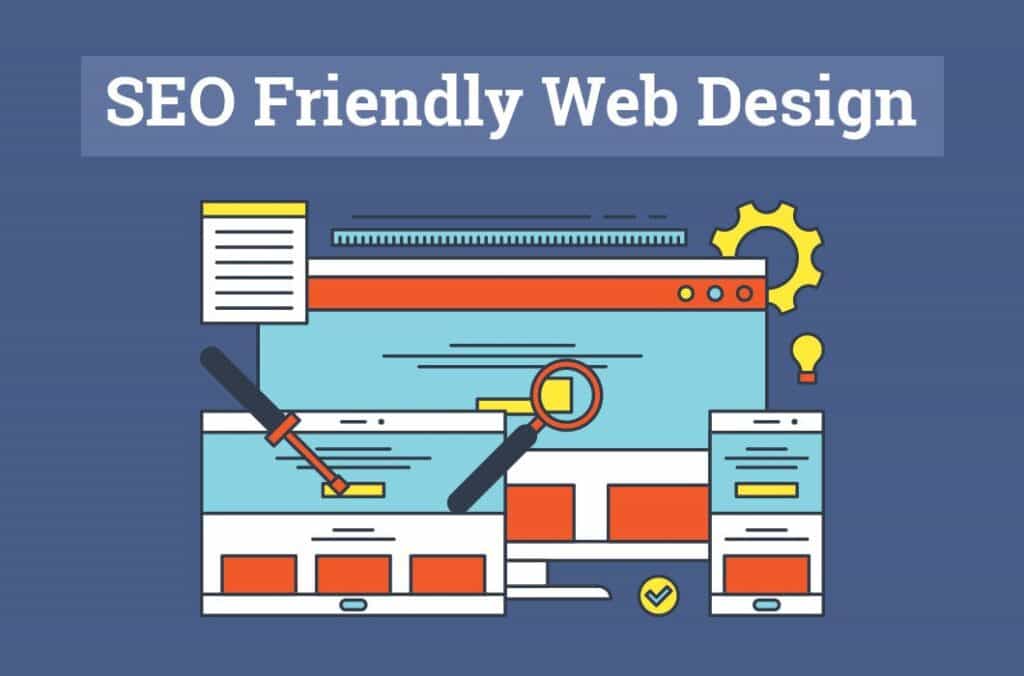SEO-friendly website design tips

In the dynamic world of search engine optimization, maintaining an edge requires keeping your site's design aligned with SEO best practices.
This guide will provide you with essential tips to ensure your website's design is not just aesthetically pleasing, but also structured to rank well in search engine results.
Embrace Simplicity in Layout
The foundation of an SEO-friendly design is a clean and simple layout that enhances user experience. Websites cluttered with too much information can lead to high bounce rates, negatively affecting SEO rankings.
Clear navigation, with a well-structured menu and intuitive controls, helps users and search engine crawlers alike to find content with ease. An organized layout with a logical hierarchy also encourages deeper site exploration, increasing session durations.
Remember to make your layout responsive, as mobile-friendliness is a significant ranking factor for search engines. A mobile-responsive design ensures your content is easily accessible across all devices.
Utilize whitespace efficiently to create an uncluttered look that highlights your key content – making it both attractive and easier for the search engines to read.
Optimize Load Times
Speed is a critical component of an SEO-friendly design. Websites that load quickly provide a better user experience and are prioritized by search engines.
Optimize images, minify code, and leverage caching to reduce load times. Utilizing a content delivery network (CDN) can also dramatically improve website performance for visitors across the globe.
Regularly test your website's speed using tools like Google PageSpeed Insights and implement the recommended improvements to maintain an edge in performance.
Utilize Header Tags for Structure
An essential aspect of SEO-friendly design is the smart use of header tags – from H1s to H2s and beyond. These tags help structure content effectively, making it easier for search engines to understand the hierarchy and relevance of your information.
Begin with a compelling H1 tag that includes your focus keyword, "SEO-friendly design," which should encapsulate the main topic of your webpage. Follow this with H2 tags for section headings that break the content into manageable chunks.
Remember, headers aren't just for robots; make sure they're also engaging for your human audience. Crafting informative and keyword-rich headers can increase your content's chances of ranking well.
Ensure your H1 is unique across the site, while H2s and smaller headers vary and support the main heading, combining relevance with variation.
Incorporate Visuals Wisely
Visual elements play a crucial part in making a site enticing, but they should be used thoughtfully. Large image files can slow down your site, while irrelevant images might confuse search engines about your content's focus.
Choose relevant images, graphics, and videos that support your textual content. These should also be optimized for quick loading by compressing and resizing without sacrificing quality.
Don't overlook the importance of alt text for images; this not only makes your site accessible to visually impaired users but also allows search engines to better understand and index the visual content, thus enhancing your SEO efforts.
Thoughtful integration of infographics and other visual data can also reinforce your written content, making complex information easier to digest.
Ensure Your Content is Accessible
Achieving an SEO-friendly design is also about accessibility. Ensure your website is navigable for all users, including those with disabilities. This practice not only broadens your audience but also aligns with search engines' preference for inclusive and accessible designs.
From proper contrast ratios for text and background to descriptive link text and the use of ARIA (Accessible Rich Internet Applications) landmarks, each element contributes to a more accessible site.
By taking the time to address these concerns, you not only enhance user experience but also demonstrate to search engines the quality and thoughtfulness of your site design.
Content is Still King
Even with a well-designed website, content remains paramount. High-quality, original, and engaging content that seamlessly incorporates your focus keyword "SEO-friendly design" can set your website apart.
Be sure your content answers the needs of your visitors and provides value. Incorporating the focus keyword naturally within the text helps maintain SEO without detracting from readability.
Lastly, updating your content regularly signals to search engines that your site is active and pertinent, which can lead to more frequent crawling and potential ranking boosts.
Designing an SEO-friendly website extends far beyond aesthetics. By considering factors like simplicity, speed, structure, visuals, and accessibility, you can significantly improve your site's chances of ranking well. Remember that these design elements should always support high-quality, informative content. Incorporating these tips can lead to a website that not only attracts visitors but also keeps them engaged and coming back for more.

Related